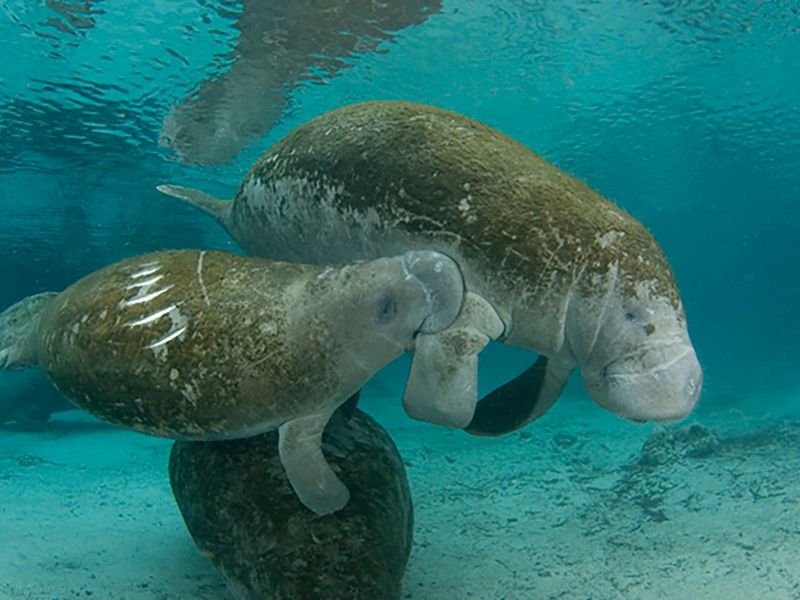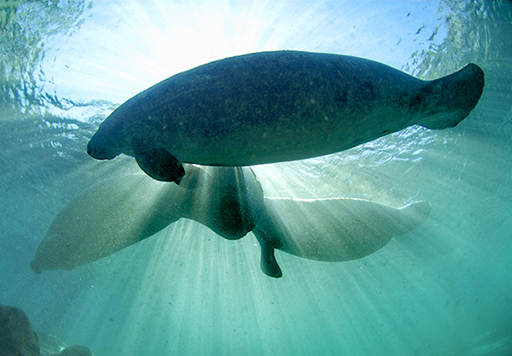
Creature Feature: Manatees
Manatees may seem like slow-moving sea cows, but these large and graceful swimmers are critical to our ocean’s ecosystems remaining in balance. These foragers rely on a plant-based diet, and they can eat up to 150 pounds of food per day! These massive mammals help maintain a high level of coastal blue carbon in our oceans and waterways, an extremely efficient form of storing carbon and preventing it from being released into the atmosphere as carbon dioxide. Learn more about these fascinating creatures and the role that they play in healthy marine ecosystems.
What Do Manatees Look Like?
Manatees have short front flippers on a long, rounded body that tapers down to a tail that is flat and shaped like a paddle. Their forelimbs each have three to four nails, and their wizened faces bear a close resemblance to one of their closest relatives: the elephant. Manatees can weigh upwards of 1,100 pounds when fully grown, reaching up to 10 feet in length. Manatees are generally gray in color and are often seen in pairs or small groups.
Habitat and Foraging Behavior
Manatees are herbivorous creatures that are often found in slow-moving water or riverbeds — anywhere that vegetation is present and flourishing. A somewhat migratory species due to their need for warm water to survive, the three species of manatees can be found in various locations throughout the world: West Indian manatees are primarily found on North America’s east coast and mostly in the state of Florida (including inFlorida Keys National Marine Sanctuary), African manatees generally stay within the river systems and west coast of Africa, and Amazonian manatees are chiefly found along the Amazon River.
Lifespan and Reproductive Strategies
Manatees can live up to 40 years in their natural habitat, but they only give birth every two years, as mother’s carry their babies for 12 months before they are born. This slow rate of reproduction is known as k-selected reproduction, where mothers invest years into raising their young to help them successfully into adulthood. Manatees calves weigh upwards of 60 pounds and tend to travel with their mothers for an additional two years after their birth on average.

Conservation and Management
The Marine Mammal Protection Act of 1972 and the Endangered Species Act of 1973 both have provisions that are focused on supporting a healthy population of manatees. Additionally, the state of Florida protects manatees under the Florida Manatee Sanctuary Act. While there are still thousands of manatees living in the world today, they do need protection. The presence of manatees is often considered a reflection of the overall health of the vegetation in an area, a critical question when you consider the role that marine plants play in protecting our world from greenhouse gases via their blue carbon conversion.
One of the biggest challenges for manatees is boats and human interactions. Manatees are such slow-moving animals that it can be difficult for them to get out of the way of boats without being injured by fast-moving propellers. Manatees that are injured by boats often bear the scars for many years if they survive the impact. You can help protect these stately creatures by maintaining moderate speeds throughout the coastal waterways in which they live and reporting animals you think might be in distress to the proper authorities.
